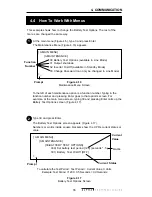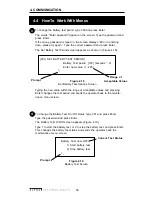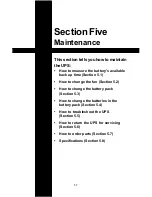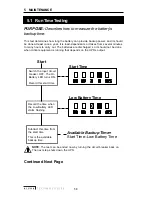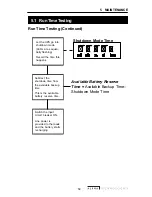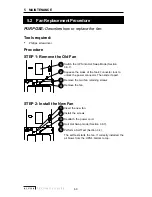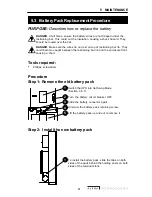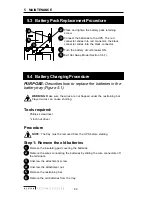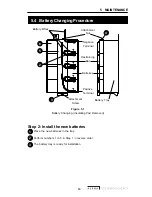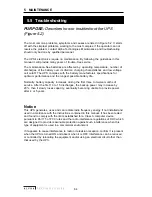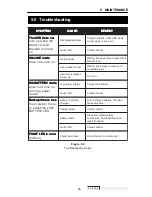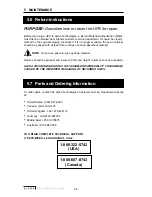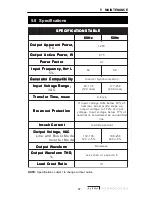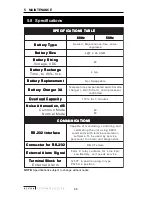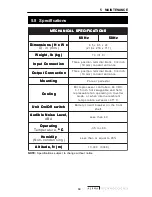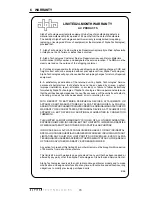
64
5
MAINTENANCE
5.5 Troubleshooting
Notice
This UPS generates, uses and can radiate radio frequency energy if not installed and
used in accordance with the instructions contained in this manual. It has been tested
and found to comply with the limits established for a Class A computer device
pursuant to Part 15 of FCC rules and the radio interference regulations of DOC which
are designed to provide reasonable protection against such interference when this
type of equipment is used in a commercial environment.
If it appears to cause interference to radio or television reception, confirm it is present
when the UPS is turned ON and absent when it is OFF. Interference can be reduced
or controlled by relocating the equipment and/or using an electrical circuit other than
that used by the UPS.
PURPOSE: Describes how to troubleshoot the UPS
(Figure 5.2).
The most common problems, symptoms and causes are listed in Figure 5.2. It starts
off with the simplest problems, working to the most complex. If the operator can not
resolve the problem, contact Alpha Technologies. Maintenance and troubleshooting
should only be done by qualified personnel.
The UPS's electronics require no maintenance. By following the guidelines in this
manual it will provide many years of trouble–free service.
The maintenance–free batteries are affected by: operating temperature; number of
discharges of the battery over its lifetime; charging characteristics and low voltage
cell cutoff. The UPS complies with the battery manufacture’s specifications for
optimum performance and the longest possible battery life.
Normally, battery capacity increases during the first three to twelve months of
service. After the first 10 to 15 discharges, the backup power may increase by
20%, then it slowly loses capacity, eventually becoming unable to provide power
after 4 or 5 years.






